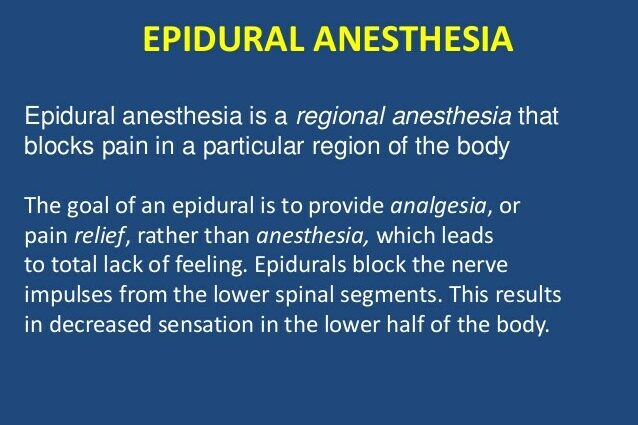Definition of epidural anesthesia
THEepidural anesthesia is a loco-regional anesthesia technique performed by an anesthetist-resuscitator. It is mainly used to mitigate or eliminate the labor pains and / or facilitate its development. This is the most popular and effective method, including for practicing Caesarean.
The principle is to block the transmission of painful sensations at the level of the nerves coming from theuterus using an injection of anesthetic near them.
Epidural anesthesia can also be used for other surgical procedures, in both men and women, in the lower abdomen.
The course
In general, a consultation is carried out by an anesthetist in the few weeks preceding the birth (this is not the case in all countries).
Epidural anesthesia consists of inserting a sterile guiding needle and a catheter (small tube) into the epidural space near the spinal cord. The epidural space surrounds the dura mater, the outermost membrane protecting the spinal cord.
The doctor first uses a local anesthetic to numb the area where the needle will be inserted. Then he inserts the guide needle to place the catheter and withdraws it. The catheter remains in place throughout the delivery to allow repeated administration of anesthetic.
The greater the amount of anesthetic used, the less pain you will feel. On the contrary, using less anesthetic will allow the mother to be more active during labor and to push more efficiently during contractions.
Anesthesia can indeed reduce the natural urge and the ability to push, which can increase the use of suction cups or forceps.
It should be noted that the use of an infusion pump, with which the woman herself doses the amount of anesthetic she receives, is increasingly used.
It is possible that the epidural cannot be performed: for example in the event of fever, blood clotting disorders, a skin infection on the back, or because labor is already too advanced.
As with any medical procedure, there are side effects: drop in the mother’s blood pressure, difficulty moving her legs (and therefore walking), then possibly headaches, back pain in the days that follow, etc. More serious complications are extremely rare.
Epidural anesthesia is the most effective analgesic method for the pain of obstetric labor.
The effects of an epidural usually go away within hours of removing the catheter.
For the baby, childbirth under epidural anesthesia is no more risky than childbirth without an epidural.
Read also : All about pregnancy |










